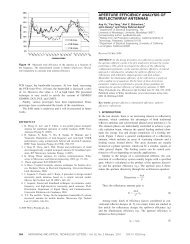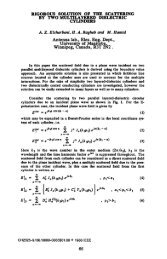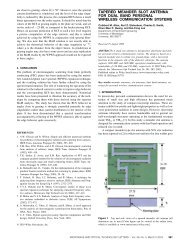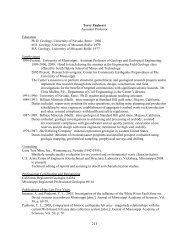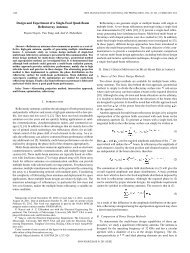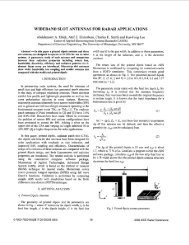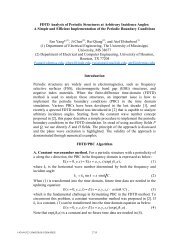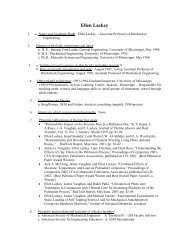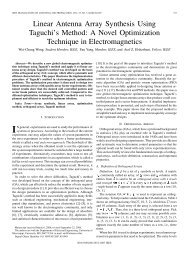OBLIQUE INCIDENCE PLANE WAVE SCATTERING FROM AN ...
OBLIQUE INCIDENCE PLANE WAVE SCATTERING FROM AN ...
OBLIQUE INCIDENCE PLANE WAVE SCATTERING FROM AN ...
You also want an ePaper? Increase the reach of your titles
YUMPU automatically turns print PDFs into web optimized ePapers that Google loves.
270 Henin, Elsherbeni, and Al Sharkawyis defined as(σ 2D = 10 loglimρ→∞[2πρ |Es z| 2|E i z| 2 ]). (31)0-10TEσ2D / λ (dB)-20-30TM-40This papero Reference [1]-500 60 120 180 240 300 360φ (degrees)Figure 3. The echo width of a single cylinder of radius a =0.1λ,ε r =4,θ i = 45, φ i =0.Figure 3represents the RCS calculated from a dielectric cylinderof radius a =0.1λ, having relative permittivity ε r = 4, with incidentangel θ i = 45 and φ i = 0. Both TM z and TE z plane waveexcitations are considered. The results generated using the presentedboundary value solution (BVS) technique are compared to the RCSdata calculated from [1]. It is clear from the figure that the twosolutions are in complete agreement for both TM z and TE z plane waveexcitation.In order to prove the validity of the above calculations for multiplecylinders, the principle of equal volume model can be used to representone single cylinder by an array of cylinders. According to this principle,the scattered field from one cylinder is expected to be the same as thatof an array of cylinders having the total cross section area equal to thecross section area of the cylinder, and having the same outer shape. InFig. 4, 91 non-intersected cylinders of radius 0.04λ are used to simulatea cylinder of radius 0.4λ. The dielectric constant of the cylinders ischosen to be greater than that of the single cylinder to achieve equaleffective area, assuming that the effective area is the product of thecross section area and the relative permittivity of the cylinder.



